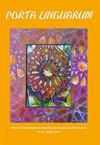Study of the satisfaction by age and gender of secondary school students with the integrated learning of Basketball and English language through a Non-linear Pedagogy
IF 2.1
4区 教育学
Q3 EDUCATION & EDUCATIONAL RESEARCH
引用次数: 0
Abstract
Content and Language Integrated Learning (CLIL) is increasingly being researched and developed in Spain. This system is based on combining the four language skills (listening, speaking, reading and writing) in a realistic context, which makes the use of language functional, with numerous studies showing the benefits of this type of content combination. The aim of the study is to analyze the differences in the effect of this type of learning in relation to the gender or ages of the students participating in such programs. The sample selected for the study was 46 students, with an average age of 13.39 years, corresponding to the 2nd and 4th years of secondary education. The SSI-BPE (Sport Satisfaction Instrument in Bilingual Physical Education) questionnaire was used to record the degree of student satisfaction. The results indicate that the bilingual teaching modality in PE classes for the development of content related to the sport of basketball is associated with an increase in satisfaction and enjoyment of the classes. However, it appears that this motivation decreases with age.基于非线性教学法的中学生篮球与英语融合学习满意度的年龄与性别研究
内容和语言综合学习(CLIL)在西班牙得到越来越多的研究和发展。这个系统是基于在现实环境中结合四种语言技能(听、说、读、写),这使得语言的使用具有功能性,许多研究表明这种内容组合的好处。本研究的目的是分析这种类型的学习效果的差异与性别或年龄的学生参与这种计划。本研究选取的样本为46名学生,平均年龄为13.39岁,对应于中学二年级和四年级。采用SSI-BPE (Sport Satisfaction Instrument in Bilingual sports Education)问卷调查学生满意度。结果表明,在体育课堂中采用双语教学模式开发篮球运动相关内容,可以提高学生的课堂满意度和课堂享受度。然而,这种动机似乎随着年龄的增长而减弱。
本文章由计算机程序翻译,如有差异,请以英文原文为准。
求助全文
约1分钟内获得全文
求助全文
来源期刊

Porta Linguarum
Social Sciences-Education
CiteScore
1.70
自引率
16.70%
发文量
51
期刊介绍:
PORTA LINGUARUM is an international and interuniversity journal that specialises in foreign language didactics. Its aims to publish empirical studies, critical revisions, and theoretical models that relate to the many factors that influence the FL teaching and learning:
- The social and school context: the family’s social and cultural influence as well as the student’s mother language and its influence on the L2 learning process, etc.
- The students: their personal characteristics (age, gender, personality traits, etc.) as well as their attitudes, motivation, cognitive styles, etc.
- The FL teacher: the teacher’s mental representations, attitudes, motivation, individual characteristics, teaching methods, etc.
- Learning conditions and the learning process, variables that influence the teaching and learning processes in the classroom: efficiency of teaching strategies, teaching methods and techniques, second language acquisition processes, students and teachers interaction, effect of teaching resources and materials, etc.
- Learning outcomes: evaluation of procedures as well as the evaluation of the students’ communicative competence at different academic levels, etc.
 求助内容:
求助内容: 应助结果提醒方式:
应助结果提醒方式:


